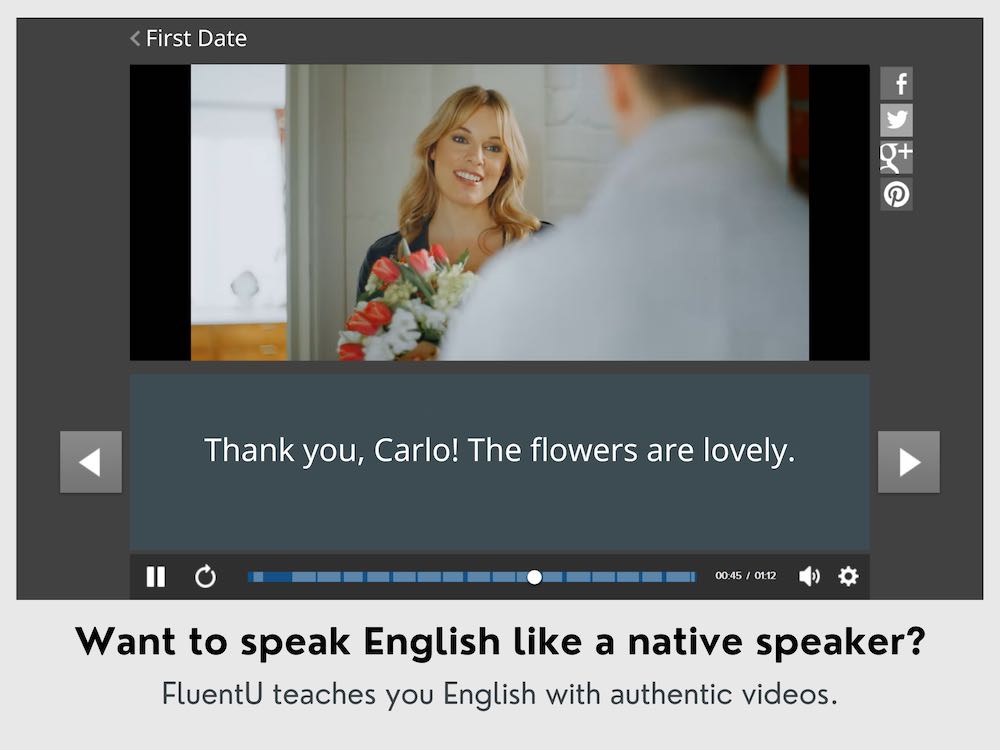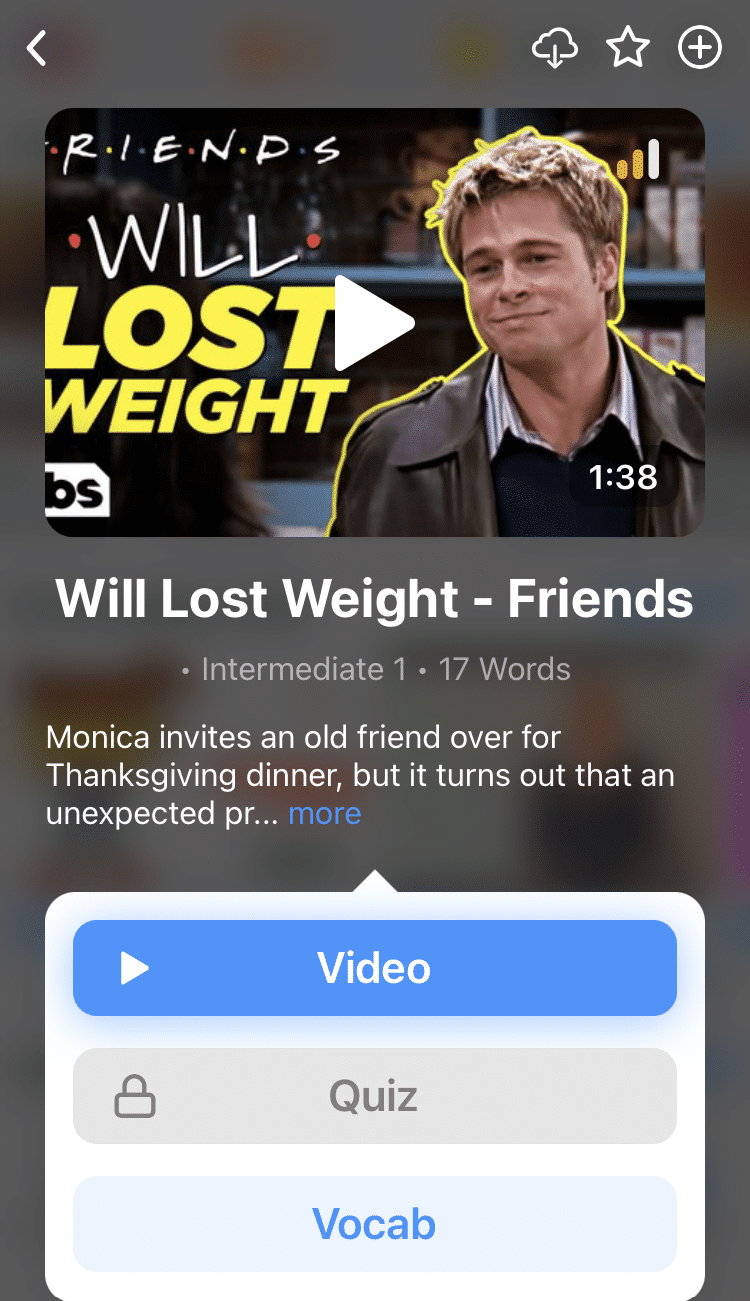73 ESL Writing Activities

From a student’s point of view, writing assignments are something to dread—but from an ESL teacher’s point of view, they should be a challenge worth accepting.
The key is a strong pre-writing activity that boosts their confidence and adds to their vocabulary at the same time. Let’s look at some different ESL writing activities that will transform your students from hesitant writers to confident wordsmiths in their own right.
Contents
- Writing Assignments Based on Stories
- Writing Activities Prompted by Music
- Writing Practice Exercises Based on Images or Pictures
- Writing Assignments Based on Food
- Writing Activities Based on Mysteries
- Exercises to Practice Writing Emails
- Activities to Practice Writing Advertisements
- Assignments to Practice Writing Reports
- Creative Writing Activity: Class Newsletter/Newspaper
- And One More Thing...
Download: This blog post is available as a convenient and portable PDF that you can take anywhere. Click here to get a copy. (Download)
Writing Assignments Based on Stories
People of all ages love a well-told story, and using stories to teach ESL is a sure winner.
A story for a pre-writing activity could be in the form of:
- A movie. It could be a biography, sci-fi film, thriller, action-packed adventure, fairy tale or even a cartoon.
- A story read aloud from a book. If you’re using this, read in a way that brings the characters’ voices to life (including the narrator’s), hold the book up to show any pictures within or scan them and project onto a screen as you read. You can also search YouTube videos of famous authors or celebrities reading a book aloud, and show these in class.
- A story from the news. It could be from the TV, radio, newspaper or an online news site.
- A story read by your students. In this case, you could let them read a story silently or with a partner, and take as long as they like to think about the important parts.
No matter what you choose, it’ll be a great lead-in to the ESL writing exercises below.
1. Re-tell the story as is, or summarize it. (This works best for beginners, who are still getting their feet wet in the waters of English comprehension.)
2. After watching “Finding Nemo”: Tell the story from the point of view of the whale, the dentist’s daughter or Bruce the shark.
3. Explain to Marlin how he should take care of Nemo better.
4. Make up a story about a farm animal/zoo animal/jungle animal. What if a baby ___ was lost? What if a child was lost in the city? What if you found a lost child?
5. After the story of “Goldilocks”: Tell the story from the baby bear’s point of view.
6. What if the baby bear and Goldilocks became best buds? What would happen?
7. After discussing “The Gingerbread Man”: Tell the story from the fox’s or gingerbread man’s point of view.
8. What did the old woman do wrong that made the gingerbread man run away?
9. How do you make a gingerbread man? What other shapes could be made instead?
10. After “Little Red Riding Hood”: Write the story in the first person—from the point of view of either Red Riding Hood or the wolf.
11. What should Red Riding Hood have done when she met the wolf?
12. After watching a “Lord of the Rings” movie: What would you do if you had the One Ring? Write about a magical quest you and several friends would have if you could.
13. After watching a “Pirates of the Caribbean” movie: What if you were a pirate? What adventures would you have if you were a pirate?
14. After watching “Titanic”: Write about what you discover when you dive onto the wreck. Or imagine you were on the ship when it sank, and talk about how you escaped.
15. Whose fault was it that so many people drowned on the Titanic? What should they have done?
16. After watching a “Star Wars” movie: Imagine you’re a space explorer and write about what happens when you meet some characters from “Star Wars.”
17. After watching a “Terminator” movie: Imagine your teacher is a robot that has come back from the future. Or imagine you have come back from the future—what would it be like?
18. After watching a “Harry Potter” movie: Make up some magic spells and explain how you’d use them.
Writing Activities Prompted by Music
Everybody loves music! Watch your students’ faces light up as soon as they realize that they’re about to be treated to some songs rather than chalk-and-talk. Music stirs the emotions, after all, and can get your students excited about writing.
Here are some ideas for music you can incorporate into ESL writing activities:
- Classical music. There are some pieces of well-known classical music that specifically tell a story, and many of these are available on YouTube.
- “Fantasia 2000,” particularly “Rhapsody in Blue.” This wonderful, wordless animated story can kick off so much great writing!
- Movie music. The music that goes with a movie tells watchers how they should be feeling, and could be a good jumping-off point for some writing.
- Popular songs and music. Self-explanatory. Check out the most popular or trending artists on YouTube or Spotify for ideas.
- Kids’ songs. There’s something about singing a catchy little tune that makes the words stick in your mind more than just saying them. These can lead to some interesting writing, too.
19. After Prokofiev’s “Peter and the Wolf”: Tell the story from Peter’s point of view.
20. After Saint-Saëns’ “The Carnival of the Animals”: Imagine walking through the scenes with the animals and interacting with them. Write a story from the point of view of one of the animals.
21. Describe the animals in “The Carnival of the Animals.”
22. After Tchaikovsky’s “Romeo and Juliet”: Re-tell this classic Shakespeare story, adding a twist.
23. After watching and listening to “Rhapsody in Blue”: Tell all/part of the story.
24. If you were the main character in “Rhapsody in Blue,” what would you do?
25. Listen to a piece of classical/instrumental music and tell the story that it might be a background to. Imagine that it’s the background music for a movie.
26. Tell the story (real or made up) behind some popular songs like Taylor Swift’s “Wildest Dreams.”
27. Describe meeting someone special like in the aforementioned Taylor Swift song.
28. What happens in your wildest dreams?
29. What if you were a famous pop star or musician? What would it be like? What would you do?
30. Give instructions on how to find your favorite song on the Internet, both music and lyrics.
31. If you play an instrument, or have a relative who plays one, write about some of the basics of how to play. (This could also work as a speaking and listening activity, and then the whole class could write about it.)
32. What is your favorite genre of music, and why? (Be sure to explain what “genre” means!)
33. Do you think young children should be allowed to freely watch music videos?
Writing Practice Exercises Based on Images or Pictures
Some pictures you can use for ESL writing activities include:
- Pictures from social media. If you use social media at all, you doubtless have a barrage of amazing photos and videos on your feed, all of which make for excellent writing prompts.
- Pictures from Google Images. A quick Google search on any (classroom-safe) image will turn up plenty.
- Cartoons. If you have young students, they’ll definitely enjoy this one.
- Pictures selected by your students. Not sure what to choose? Have your students pick their own pictures to write about. You’ll be pleasantly surprised at how vibrant their writing can be when they’re writing about subjects they actually care about.
Regardless of the picture you (or your students) choose, here are some writing prompts you can consider.
34. Tell a story—real or imagined—of what is happening in the picture.
35. Write about what happens next from the pictured moment.
36. Write about what was happening just before the pictured incident.
37. What if that was you in the picture?
38. What if you were the person who took the picture?
39. What if you knew the people in the picture? What would you say to them?
40. Describe all of the elements in the picture. This is great for vocabulary practice.
41. Describe how someone in the picture might be feeling.
42. Explain how to get into a pictured predicament (for example, in the picture here, how did he get into the boat without the crocodile eating him?) as well as how to get out of it.
43. Express an opinion about the rights and wrongs of the pictured situation. For example, for the same picture above: Should crocodiles be hunted and killed? What should happen if a crocodile kills someone?
Writing Assignments Based on Food
Many of your students likely enjoy thinking and talking about food. So why wouldn’t they be motivated to write about it?
How you integrate food into your ESL writing assignments depends on your classroom arrangements and the amount of time you’re willing to put into preparation.
In any case, here are some ideas:
- Start with the preparation and sharing of food before writing about it.
- Look at pictures of food, and talk about them before moving on to writing.
- Have students research food-related topics on the internet.
- Start with a story about food.
Here are the specific food writing prompts:
44. After the story of “The Gingerbread Man”: Think about food that develops a life of its own, and what would happen with it. (This can also open up a discussion about cultural foods.) For example, make up a similar story about another piece of food (e.g., spaghetti or rice that comes alive). What if you felt something moving in your mouth after you bit into your burger?
45. Write a story (real or imagined) about being very hungry and/or finding/buying/stealing food to meet a desperate need.
46. Write a story about trying a new, unfamiliar kind of food—maybe in a (relevant) cross-cultural setting.
47. Write a story about finding and eating a food that has magical properties. (Maybe read or watch some or all of “Alice in Wonderland” first.)
48. Describe interesting/disgusting/unusual/delicious/colorful foods, especially after a class tasting lesson. (Prepare students first with suitable taste vocabulary.)
49. Describe a food that’s unfamiliar to most students in the class. (This is particularly helpful for classes where there are students belonging to minority groups who hesitate to speak up.)
50. Describe an imaginary magical food.
51. Give instructions for preparing a particular recipe.
52. After a class activity or demonstration involving food: Write down what you have learned.
53. Give instructions for producing food—growing vegetables, keeping animals, etc.
54. Give instructions for buying the best food—what to look for, looking at labels, checking prices and the like.
55. Write about your opinion on food and health in First World and Third World countries. (Explain what makes a country “First,” “Second” or “Third World” first.)
56. Write about your opinion on the cost of food.
57. Write about your opinion on GMOs or genetically engineered foods.
Writing Activities Based on Mysteries
There’s nothing quite like a good “whodunnit,” and students will always enjoy a good puzzle. You can base various pre-writing activities around the two games below to get the class warmed up for ESL writing practice.
- Conundrum. This is an example of a game that can be played as a speaking and listening activity, and can lead into some good writing. The game starts with a simple statement or description of a situation like the ones described in situation puzzles. Students ask questions and receive yes/no answers until they work out the explanation for the situation.
After Conundrum, here are some of the activities your students can do:
58. Write a story about the sequence of events involved in a situation brought up in the game.
59. Devise and describe your own situation puzzle.
- Guessing game. This uses all five senses, and is especially appreciated by younger students. This can involve:
- Putting their hands inside a cloth bag (or just feeling the outside) to guess what an object is.
- Smelling substances in opaque jars with perforated lids, and trying to guess what they are.
- Tasting mystery foods on plastic spoons (with blindfolds).
- Looking at pictures of mysterious objects from obscure angles.
- Listening to and guessing the origins of sound effects. (You can record your own, or use some from the Internet.)
(Important: Make sure that whatever you’re using for your guessing game is safe for your students, especially if they involve having to touch, taste or smell the object.)
After a guessing game, your students can:
60. Write about a possible mystery object and a magical quality it could possess.
61. Describe what you thought you saw, heard, felt, tasted or smelled.
For both games, here are some writing prompts you can do:
62. Give instructions for playing one of the games.
63. Give instructions for the perfect crime.
64. Give your opinion about a recent crime and the punishment for it.
Exercises to Practice Writing Emails
Emailing can often be a scary task for your students, especially if they’re using a new, strange language like English. You can utilize an email writing activity to help your students build confidence and get more comfortable writing in English.
Email can also teach your students things like proper language (formal or informal), structure and format. Email-related writing activities for ESL students can offer ample opportunities to teach all of these three aspects.
Since emails involve two parties (the sender and the receiver), you’ll need to pair your students up for this activity. Here’s how to prepare for it:
- Create one set of worksheets explaining details relevant to the sender. For example, it could contain information about a sender’s upcoming birthday party that they want to invite the receiver to.
- Create another set of worksheets with the receiver’s details. The worksheets could contain questions about food dishes or gifts, or it could say that the receiver can’t make it for one reason or other.
Once the above has been done, give one set of worksheets to the “senders” and the other to the “receivers.” Then, here’s what your students will do:
65. Based on the senders’ worksheets, write an email inviting the receiver and explaining the key aspects of the event featured in the worksheet.
66. Based on the receivers’ worksheets, write an email explaining why you can or cannot make it to the party, and/or what other information you need about the event.
Activities to Practice Writing Advertisements
Advertisements are everywhere, and you can bet that your students have a few favorite ads of their own. Advertisement-related writing activities work across age groups and can be adapted to most students and their needs.
This great ESL writing assignment can help your students put the adjectives they’ve learned into good use, as well as showcase their creative writing and persuasion skills.
You can find advertisements everywhere, including:
- YouTube videos
- TV jingles
- Posters
- Flyers
- Billboards
- Newspapers and magazines
You can also bring an object (or handful of objects) to class that your students can write ads about.
67. After your students carefully examine the object(s) you brought into class: Write all the adjectives you can think of about it.
68. For a more challenging writing exercise: Write an ad about the object. How would you persuade someone who knows nothing about the object whatsoever to buy it? (Your students may or may not use the adjectives they wrote down earlier. Encourage them to be creative!)
Assignments to Practice Writing Reports
Your students have likely already done some kind of report during the course of their studies. Also, writing reports is a skill that’ll be useful to them once they enter college or the corporate world (if they aren’t in it already). If you feel that they need a little more practice in this area, use this ESL writing assignment.
First, discuss how research and structure matter to reports—and perhaps show them a few samples. Then, give them a few questions to base their reports on, like:
69. What can you say about (insert topic here) in terms of (insert specific angle here)? (For example, “What can you say about the government’s efforts to improve the local park in terms of its impact on the general public?” Of course, you should adapt this question to the level of your students.)
70. After talking about a YouTube video on bears eating salmon: What would happen to the bears if the salmon ran out?
Creative Writing Activity: Class Newsletter/Newspaper
This ESL writing activity is a bit more intensive and will allow your students to employ many different aspects of their ESL knowledge. Crafting a class newsletter will build collaboration, communication, listening, speaking and, of course, writing skills. If they’re not sure how to build a newsletter or newspaper from scratch, they can always swipe from premade templates like this one.
The newsletter/newspaper can follow a specific theme, or the articles can consist of a hodgepodge of random topics based on questions like:
71. What is the most interesting thing that happened in school this year? It can be the funniest/scariest/most heartwarming incident. Write a feature article about it. (Make sure to explain what a “feature article” is.)
72. Write a report highlighting the key events in some recent local festivals or concerts.
73. Going off of the last exercise, write an ad inviting the reader to buy a product or attend an event.
Once all of the articles are done, you can start putting them together. Make sure to walk your students through these newspaper layout tips. And when the newsletter/newspaper is finally published and circulated out there for the world to see, remember to congratulate your students for a job well done!
No matter what writing assignments you choose, make sure to keep the excitement level high so that your students are enthusiastic for your next writing session.
Whether they write by hand or type on a computer, remember to encourage them as much as you can by focusing on the good points rather than just running all over their mistakes with a red pen.
Lastly, find ways for them to share their efforts—whether online, on the classroom wall, bound together in a book to be passed around, etc.
They can also read aloud to each other, share with their parents and siblings and even share with other classes!
For more ESL assignment ideas, check out this post:
13 ESL Homework Ideas | FluentU English Educator Blog
Great ESL homework ideas can be difficult to come up with. So check out these 13 great ideas for ESL homework assignments that your students will love. Not only are they…
FluentU videos also might inspire more ideas for writing assignments.
FluentU takes authentic videos—like music videos, movie trailers, news and inspiring talks—and turns them into personalized language learning lessons.
You can try FluentU for free for 2 weeks. Check out the website or download the iOS app or Android app.
P.S. Click here to take advantage of our current sale! (Expires at the end of this month.)

Download: This blog post is available as a convenient and portable PDF that you can take anywhere. Click here to get a copy. (Download)
And One More Thing...
If you like learning English through movies and online media, you should also check out FluentU. FluentU lets you learn English from popular talk shows, catchy music videos and funny commercials, as you can see here:
The FluentU app and website makes it really easy to watch English videos. There are captions that are interactive. That means you can tap on any word to see an image, definition, and useful examples.
For example, when you tap on the word "searching," you see this:
Learn all the vocabulary in any video with quizzes. Swipe left or right to see more examples for the word you’re learning.

FluentU helps you learn fast with useful questions and multiple examples. Learn more.
The best part? FluentU remembers the vocabulary that you’re learning. It gives you extra practice with difficult words—and reminds you when it’s time to review what you’ve learned. You have a truly personalized experience.
Start using the FluentU website on your computer or tablet or, better yet, download the FluentU app from the iTunes or Google Play store. Click here to take advantage of our current sale! (Expires at the end of this month.)










